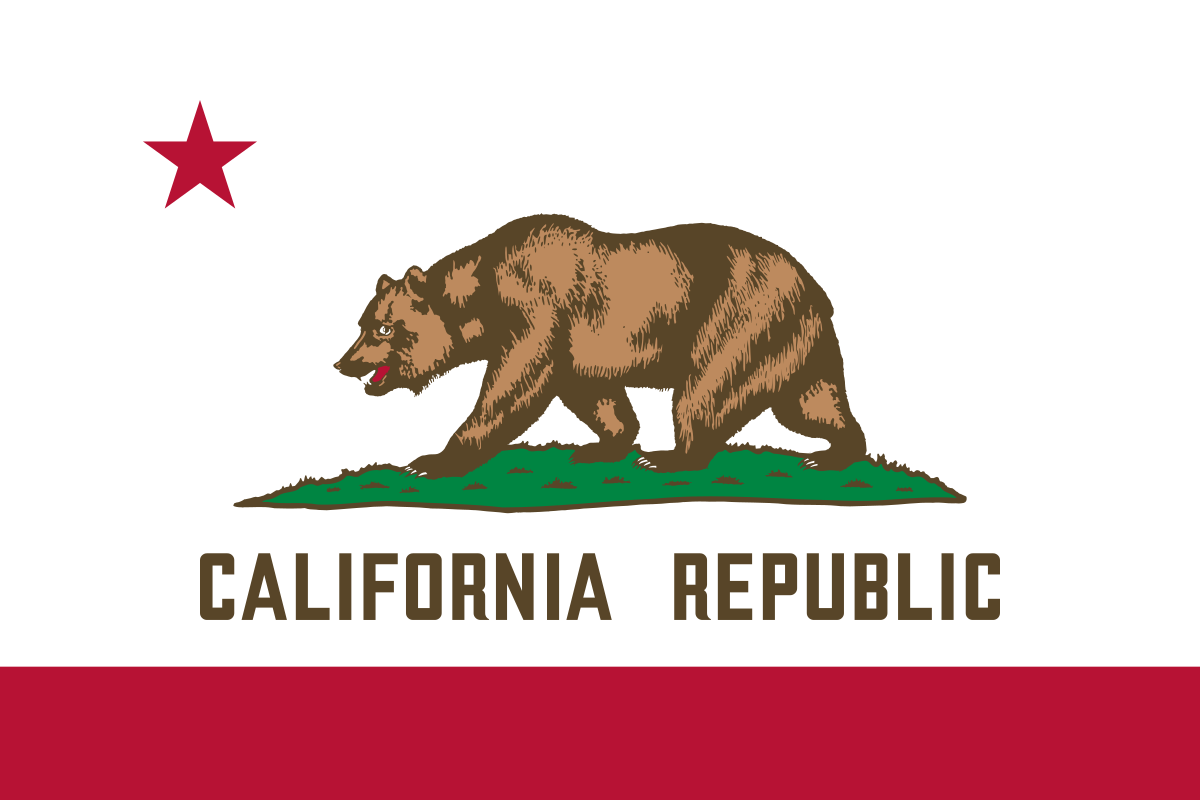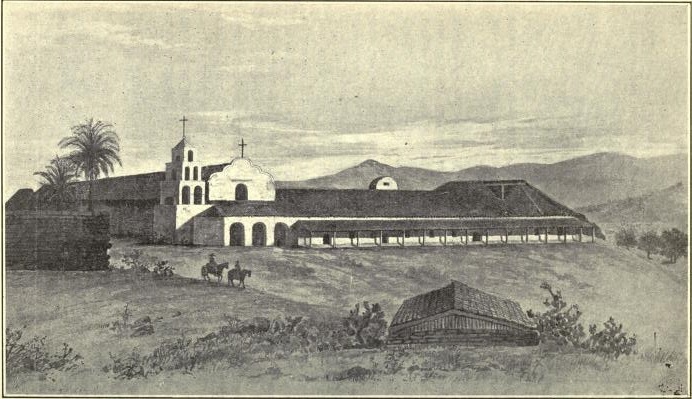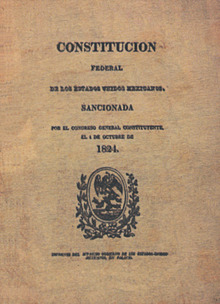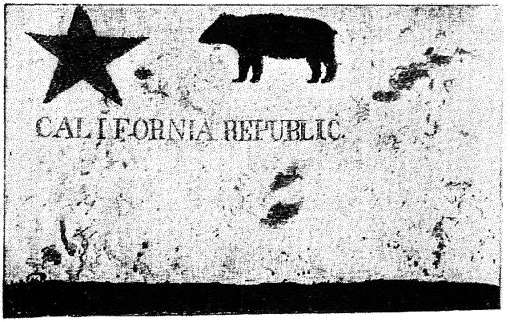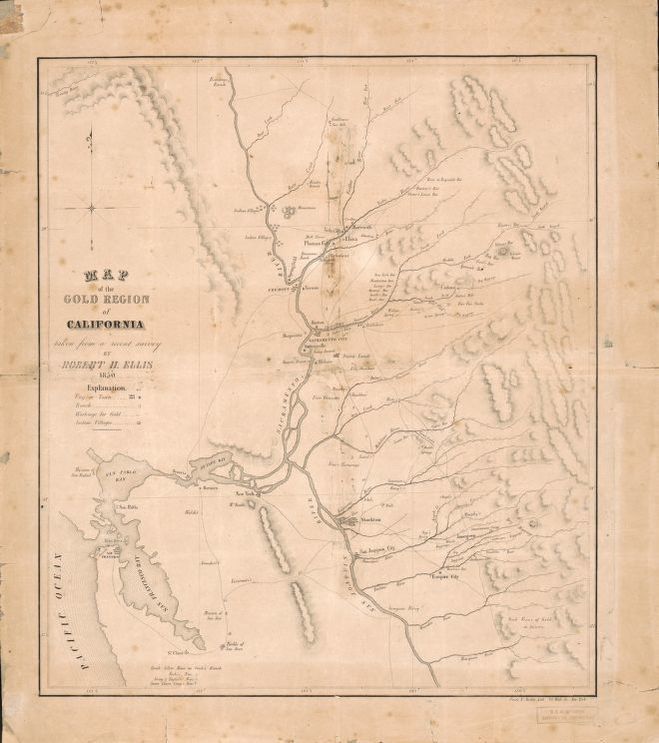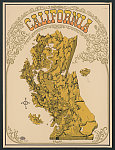
The History of Colonization in California
This page follows the second part of the journey of Californian Indigenous history – the colonization of Alta California "Upper California" or Neuva California "New California." No matter the term for it, the colonization of California provided to be disastrous for the native populations everywhere. Each section highlights an important part of the history of the colonization of California, any important events, and illustrates the effects on the indigenous tribes of the region. At the bottom is a map that depicts where in California each important event occurred. Below is a timeline that demonstrates a different format for digesting the information in a more chronologically efficient way.
The Spanish Arrive in California
In 1769, Spanish Franciscan priest, Junipero Serra, was sent by the Spanish to establish a mission in California to extend Spanish hold into "Alta California." The first of 21 coastal missions, Mission San Diego de Alcala was created to establish a presence in the Pacific Coast as a result of the growing rule of British and Russians in the area.
Within 5 weeks of the Franciscans' arrival in 1769, the Kumeyaay tribe in San Diego burned it to the ground and killed the local father as well. This was done as a result of many things, one being the mistreatment of the native woman, who were used as property of the Spanish militia.
From the Spanish perspective, these missions were political, religious, and cultural successes. They served to colonize the area and baptize Native Americans. Despite this view of the California missions, they had other uses, The Franciscans were accompanied by armed Spanish soldiers which were used to intimidate the locals. Additionally, the onslaught of European diseases affected many natives who then sought help from the settlers. These missions were enlisted with the task of "converting" the Native Californians in a 10-year period. The main directive was to "educate" the natives" so they could become "working-class citizens of the Spanish Empire." The coastal land was stolen and the people were forced to work for the Spanish. Still, the "converts" practiced their old rituals in secret and worshipped their old deities. Many tribes revolted together against the priests and missions as at the Mission San Diego de Alcala.
Around 100,000 natives die as a result of the missions, which is around a 1/3 of the population (NAHC).
The Mexican Republic Takes Over
In 1823, the Mexican Republic replaced the Spanish with the rule over the area. Colonial citizens had permits to the parts of the land, which claimed about 1/6 of the territory. Even though the original missions were only supposed to be in place for 10 years, missionaries continued to fight against surrendering their land back to the natives. The original plan was that after "conversions," the natives would become citizens of Mexico, and the missions and the land they were on would be given back to them. In 1824, however, the Mexican Republic's constitution gave Natives the right to vote and hold public office positions. Still, the natives were often treated as slaves.
Despite this, the new Mexican government gave 51 land grants to its citizens, which, in actuality, belonged to native tribes that were forcibly moved to missions. The colonial ranchers still had a growing desire to gain more native land. Between 1834 - 1836, the Mexican government disallowed the colonial settlers to use natives for labor and concocted a plan to redistribute the land that the missions were erected on. This entire system was corrupt, as politicians gave themselves and their families the most valuable regions of land, leaving not much for the actual natives of the land. Further, only a few natives from the missions were eligible to get the redistributed land, and, since many were moved from the regions they were native to in order to provide labor for the mission areas, they were unfamiliar with the area.
The Native Americans who did end up returning to the lands that they were originally from witnessed the devastation of population decline, due to disease, and environmental degradation from new, invasive species. Former fugitives from missions banded to fight against Mexican militant attacks and slave-hunting raids, using their power to create organized resistance against Mexican ranchers and the government. Out of fear of their growing power, the Mexican government auctioned off 762 more land grants by 1847. As a result, natives continued to commit stock raids of the lands, which affected the owners so much so that ranchers asked the Mexican government to repurchase their land as a result.
Still, even with the success of their communal effort, the native population was declining due to epidemics from diseases brought over by the colonizers. Another factor of the immense native population degradation was the forced labor and violence against them by Mexican military and slave-hunting raids.
The indigenous population, on the night before the American invasion, is down to 150,000 from about 310,000. A 50% decline in only 77 years (NAHC).
The Americans Invade California
The first flag of the California Republic was formed in 1846, following the rebellion of a group of illegal American immigrants against the Mexican government. After learning of the state of the Mexican-American War, these settlers formed an alliance to help aid the U.S. military. Indigenous people additionally aided American forces as scouts, translators, and wranglers, despite the fact that the U.S. Army Forces had murdered many natives in attacks prior.
Following this, Mexican rule collapsed in 1847, and upon learning that slave-traders had been appointed positions of power as Indian sub-agents, natives continued their interior stock-raiding attacks. As a result, the nearby governments placed restrictions that required natives to carry employment certificates.
The Gold Rush
Following the discovery of gold in the foothills, a huge rush of people from all over the world entered California with the hopes of striking gold. From here on, a dark age of "widespread sexual assault and mass murder" against the natives occurred (NAHC). In one year, over 100,000 people flooded into the region, yielding catastrophic results against the native population.
Deliberate killings and attacks of the natives ensued, and as a result, the declining indigenous population fought back, resisting miners as much as they could. Many vigilante militant groups were formed whose prime goal was to murder as many natives as they could and to capture their children.
In the first two years of the Gold Rush, more than 100,000 natives die because of random killings and disease. Now, there remains a mere 70,000 indigenous population, a staggering decline.
Still, the remaining indigenous natives fought for what was left of their land and their people through organized resistance against the settlers. For example, in 1851, a group of Miwok tribes fought back miners in their territory with armed resistance. When one tribe destroyed an American-owned trading post, which was known to hold at least 12 "Indian wives," they were met with immediate violence from the militia who attacked natives all around the southern region of California.
Colonization History Map
This map provides a tool to view the colonized areas of California and how it affects the indigenous people of the area. Each colored block has a tidbit with information and is accompanied by an image or file to showcase the topic being covered.
How to Use:
Select a shaded region on the map and view the corresponding information on the background of the colonization history with respect to that specific area of California. Each section contains an image relevant to the event in question.
Colonization History Timeline
This timeline offers a different perspective of analyzing the history of indigenous mistreatment and California's colonization.
